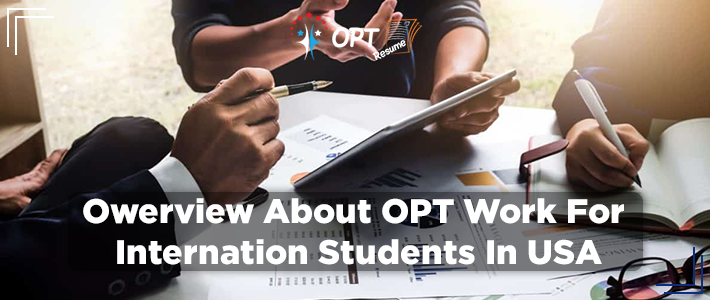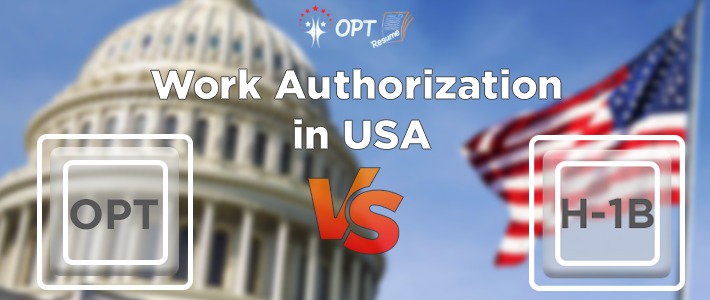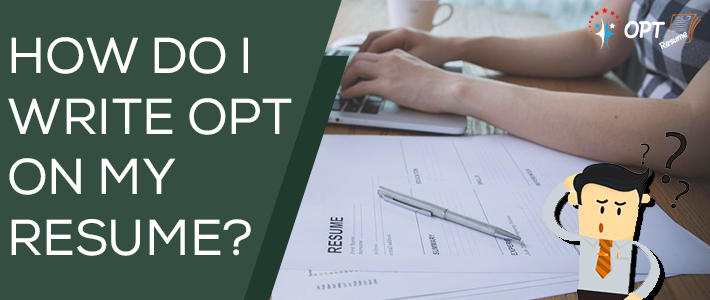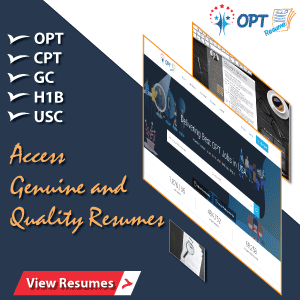OPT or Optional Practical Training is a 12-month program designed for international students who are either pursuing or have completed their education in the United States of America. Optional practical training allows higher education students, i.e., students enrolled in undergraduate, graduate, and doctoral courses to undertake employment opportunities for a total period of 12 months (1 year).
Students in STEM (Science, Technology, Engineering, and Mathematics) disciplines get an additional period of 24 months for OPT. Hence, they get a total period of 36 months (3 years). As per the rules, students have to accept jobs that are related to their major area of study as the motive of the OPT program is to help F1 student visa holders gain experience and exposure in their field.
Pre-Completion, Post-Completion, Full-Time and Part-Time OPT
The optional practical training undertaken by the students can be categorized into different types, such as ‘pre-completion OPT’, ‘post-completion OPT’, ‘part-time OPT’ and ‘full-time OPT’ depending on the beginning time and duration of OPT.
What is Pre-Completion & Post-Completion OPT?
The pre-completion OPT refers to the OPT jobs that are carried out before the completion of an academic program. Whereas the post-completion OPT refers to the OPT jobs that are carried out after the completion of an academic program.
What is Full-Time & Part-Time OPT?
The pre-completion optional practical training jobs can be performed either full-time or part-time. The rules dictate that an F1 student can work part-time when the school is in session and full-time when the school is not in session (i.e., when the school gives breaks). Students, who wish to carry out part-time jobs when the school is not in session, are free to do so. But, the post-completion optional practical training jobs have to be performed full-time.
How many hours can you work on OPT?
Now, coming to the definition of part-time and full-time OPT jobs. In a part-time pre-completion OPT job, students can work 20 hours or less a week as opposed to working 40 hours or less a week in a full-time pre-completion OPT job. The F1 visa holders on a post-completion OPT job must work for at least 20 hours a week. However, there is no limit to the maximum number of hours for which they can work.
Process for Receiving Permission for Optional Practical Training
Before beginning to work on an OPT job, you must obtain permission from the U.S. Citizenship and Immigration Services (USCIS). The application process involves submitting the mandatory documents and fees to the Designated School Official (DSO). You also need to specify the start date and end date of your OPT employment. The DSO issues Form I-20 (It contains OPT recommendation) to a student within 1-2 weeks of receiving the application.
Then, a student needs to submit Form I-765, copy of form I-20, passport-sized photos, and other documents as well as fees to the USCIS through a physical mail. Your application must be received by the USCIS within 29 days from the issuance of Form I-20 or else your application can be rejected. If your application is approved, you will receive an email regarding the same. You will also receive an EAD card through the post.
What is an Employment Authorization Document?
EAD, which stands for ‘Employment Authorization Document’, is proof that you have been authorized to work in the USA. The start date and end date of your OPT are mentioned on the EAD card. With the help of an EAD card, you can apply for social security number and driver’s license (In case your workplace is in a different state from the one you study/studied in.)
When to apply for an OPT EAD Card?
Pre-completion OPT jobs can be undertaken after completing at least 1 year of enrolment in an academic program. But, you can apply once you complete 9 months of enrolment. So, it works in your favor to apply as soon as you complete 9 months of enrolment in your institution.
Post-completion OPT jobs have to be undertaken within 60 days after the completion date of an academic program. The application can be made up to 90 days before and 60 days after the completion date of the program. The USCIS must receive your application for post-completion OPT within 60 days of the program completion date.
The USCIS takes approximately 60-90 days for processing the application. At times, the time taken may increase to 4 months. So, you should plan the application date as well as OPT start and end dates accordingly, especially in the case of post-completion OPT. You cannot begin working before receiving your EAD card. Once you receive your EAD card, you have to wait till your OPT start date arrives (not applicable if you receive your EAD card when your OPT start date has already passed).
You should file an application for STEM OPT extension up to 90 days before the expiration date of your current post-completion OPT EAD card. The application for STEM OPT extension must be received by the USCIS within 60 days of the STEM OPT recommendation.
What if the OPT Application is not processed in Time?
If your post-completion OPT is not processed before the completion date of your academic program, you can still live in the USA legally, as F1 student visa holders are allowed to remain in the country for 60 days after the completion of studies. But, if you don’t receive an EAD card during these 60 days as well, you should return to your home country immediately to avoid deportation and problems in your future re-entry.
If the applications made for STEM OPT extension are not processed before or on the expiration date of the post-completion OPT EAD card, a grace period of 180 days is given to the students. This grace period ends as soon as the outcome of the application arrives.
Rules for Unemployment during Post-Completion OPT
International students working on post-completion OPT are allowed a maximum of 90 days of unemployment from the authorized period of 12 months of OPT. So, you need to make sure that you don’t remain unemployed for more than 90 days or else you will lose the validity of your F1 visa.
The rules for unemployment don’t apply to pre-completion OPT. For calculating the period of unemployment, the start and end dates of OPT as mentioned on the EAD card are considered. Therefore, it’s advisable to apply for an employment authorization document well in advance. If you receive your EAD card or if you start working when your OPT start date has already passed, the gap between the two dates will be counted toward your unemployment period.
Offer Letter and Compensation for OPT & STEM OPT Extension
Students willing to take up pre-completion OPT and post-completion OPT jobs need not have any offer letter in hand while applying for an EAD card. But, students willing to apply for a STEM OPT extension must have a formal job offer in hand at the time of submitting an application.
During pre-completion and post-completion OPT, students can accept paid jobs, undertake volunteering activities, and even engage in self-employment. However, STEM OPT students must work on paid jobs provided by the employer in the United States of America.
OPT Students must remember these Key Points
- Only one optional practical training (OPT) is allowed at each degree level. So, even if you get enrolled in more than one-degree programs at the same level, you will get only one OPT.
- If you join a master’s degree or a doctoral degree program before completing the OPT, then the unused period of OPT available with your bachelor’s degree or master’s degree respectively will not be carried forward.
- You need to apply for a social security number (SSN) if you are working on a paid OPT job. You can submit an application for SSN once you receive your EAD card.
- The period of curricular practical training (CPT) completed by you will be deducted from the period of 12 months allotted to you for optional practical training (OPT).
- The time period for which you got engaged in pre-completion OPT is deducted from 12 months on a proportional basis for determining the permissible time period of post-completion OPT.
- You should avoid traveling outside the USA while your application for post-completion OPT, STEM OPT extension, or change of visa status from F1 to H1-B is pending.
- The holidays provided by your employer during your post-completion OPT and STEM OPT extension will not be counted toward your unemployment period.
- If you are unemployed during the time period authorized for post-completion OPT or STEM OPT extension, weekends and holidays will also be counted toward your unemployment period.
- You need to maintain lawful F1 status and ensure that your records regarding studies and employment are updated in the Student and Exchange Visitor Information System (SEVIS) portal.
How to Find OPT and STEM OPT Extension Jobs?
Landing a suitable job for pre-completion OPT, post-completion OPT, and STEM OPT extension can be quite challenging for international students in the USA. Following multiple sources, sending job applications endlessly, and waiting curiously for the interview calls can increase your confusion and frustration.
Therefore, we have built a feature-rich online job portal for F1 students. On OPTResume, you can view thousands of OPT jobs across industries and find a job that matches your qualifications and interests. Many reputable business firms and placement agencies post daily new jobs on our portal.
We hope you would have liked this blog post!





